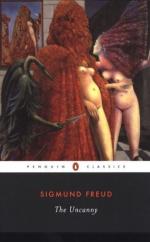
|
| Name: _________________________ | Period: ___________________ |
This test consists of 15 multiple choice questions and 5 short answer questions.
Multiple Choice Questions
1. According to Freud, what do childhood memories appear to be?
(a) Emotionally important.
(b) Subtle.
(c) Literal.
(d) Emotionally unimportant.
2. How old was Henri in the other memory he recalls to Freud?
(a) 19 years old.
(b) 17 years old.
(c) 20 years old.
(d) 18 years old.
3. Who did Henri fall in love with in his adolescent memory?
(a) His best friend.
(b) His sister.
(c) His cousin.
(d) No one.
4. What is banal content and emotional resonance essential to?
(a) Movie images.
(b) Screen memories.
(c) Movie memories.
(d) Screen images.
5. What happens as a result from the daydream in the daydreamer's real life?
(a) A fear of never having one's dream become reality.
(b) A fear of never reaching one's dreams.
(c) A pleasure of living out possibilities.
(d) A pleasure of feeling fulfilled desires.
6. What does Henri remember about what he was given in his early childhood dream?
(a) The water was cold.
(b) The bread was delicious.
(c) The milk was smoothe.
(d) The honey was sweet.
7. What does our unconscious mind operate on, according to Freud?
(a) Many different associatons and analogies.
(b) Different connections.
(c) Many images.
(d) Associations to images.
8. What can fantasies do for a healthy dreamer?
(a) Dream big.
(b) Reach one's dreams.
(c) Think through the possibilities of the future.
(d) Stay grounded.
9. What does Freud find most heroes in fiction really are?
(a) Fake.
(b) Fantastical people.
(c) Desires.
(d) Ego projections.
10. Who is the main person in Henri's early childhood memory?
(a) A young girl.
(b) A bird.
(c) A turtle.
(d) A young boy.
11. What happens as a result of the conflict between the two forces in the case of childhood memories?
(a) A distorted version of the memory takes shape.
(b) Nothing.
(c) A replacement of the memory occurs.
(d) A substitution of the memory occurs.
12. Where can the ego put the dreamer?
(a) In a foreign place.
(b) In many different situations.
(c) In a happy place.
(d) In a coma state.
13. What must childhood memories be triggered by, according to Freud?
(a) Emotional resonance.
(b) Emotional stability.
(c) Emotional instability.
(d) Emotional resistance.
14. What does the little girl represent in Henri's adolescent memory?
(a) His love.
(b) His incest.
(c) His desire.
(d) His cousin.
15. What is the condition of the memory once the two forces coexist in the case of a childhood memory?
(a) The memory is suppressed.
(b) The memory is distorted.
(c) The memory is vague.
(d) The memory is clear.
Short Answer Questions
1. What does the ego have during day and night dreams?
2. When does Freud argue the creative process begins for a person?
3. Who are V. and C. Henri?
4. What does Freud suggest memory like episodes should be called?
5. What does a daydream attempt to do for the dreamer?
|
This section contains 467 words (approx. 2 pages at 300 words per page) |

|




